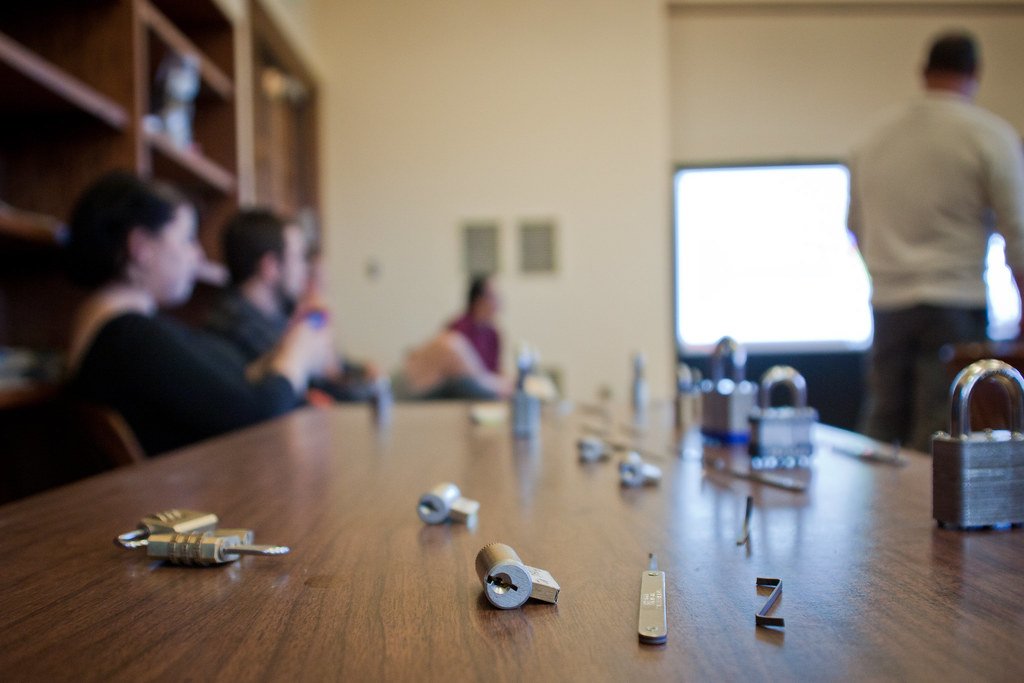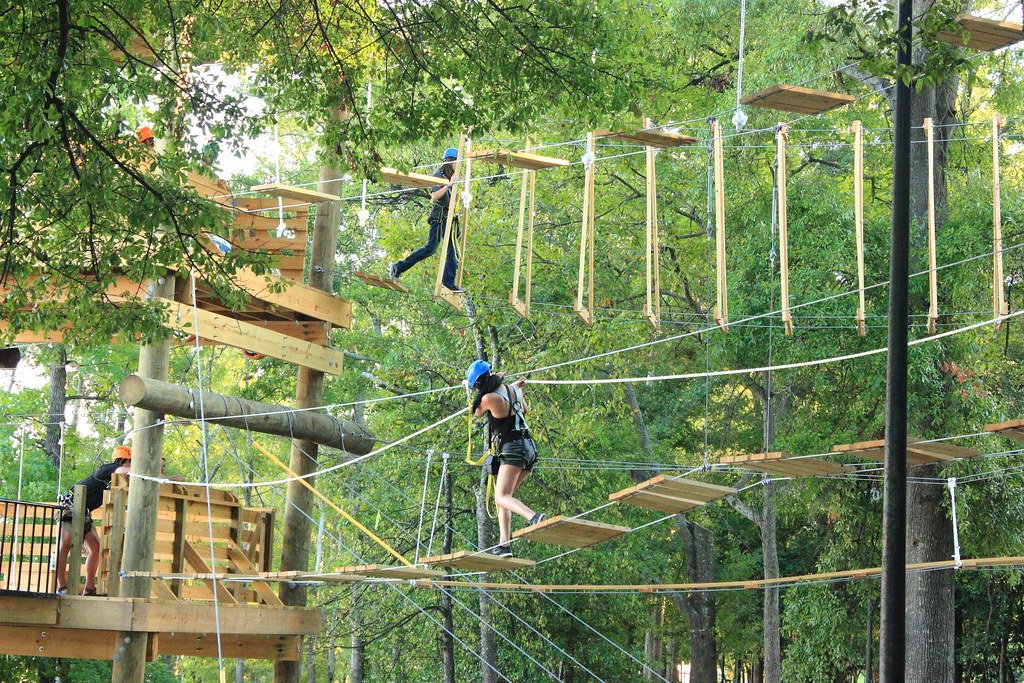Have you ever been mesmerized by those intense lock-picking scenes in spy movies? Or perhaps you’ve found yourself captivated by the thrilling world of locksport, where lock enthusiasts showcase their skills in a battle of cunning and finesse? If you have a knack for problem-solving or simply crave a unique challenge, then it’s time to embark on a DIY journey to create your very own lock-picking obstacle course. With a touch of creativity and a pinch of patience, you can construct a labyrinth of locks that will put your skills to the ultimate test. So, fasten your seatbelt, grab your trusty lockpick set, and get ready to dive headfirst into the realm of lock-picking adventures.
Table of Contents
- Designing the Perfect Layout for Your Locksport Obstacle Course
- Choosing the Ideal Locks and Tools for Your DIY Course
- Crafting Challenging and Engaging Lock Puzzles
- Incorporating Various Difficulty Levels in Your Obstacle Course
- Ensuring Safety Measures and Proper Practice Techniques
- Q&A
- In Conclusion

Designing the Perfect Layout for Your Locksport Obstacle Course
Whether you’re a seasoned locksport enthusiast or just getting started with this fascinating hobby, creating a well-designed layout for your locksport obstacle course is crucial for an engaging and challenging experience. Here are some creative ideas and tips to help you design the perfect layout:
1. Think outside the box with lock placement: Instead of the traditional horizontal or vertical placements, consider unusual angles or asymmetrical arrangements to keep participants on their toes. This will test their skills in maneuvering locks from various positions, adding an extra layer of difficulty to the course.
2. Balance difficulty levels: Incorporate a range of locks with different levels of complexity, ensuring that beginners and advanced locksport enthusiasts alike can find challenges that suit their skill levels. From simple padlocks to intricate combination locks or even electronic locks, variety is key in maintaining a dynamic and engaging course.
3. Create themed sections: Take your locksport course to the next level by introducing themed sections. From a medieval-themed area featuring rustic locks and keys to a futuristic zone with advanced electronic locks, the possibilities are endless. This not only adds visual appeal but also adds excitement and a touch of immersion to the overall experience.
4. Include interactive elements: Don’t limit your layout to just locks – include interactive elements that require participants to solve puzzles, find hidden keys, or navigate obstacles to reach the next lock. This will add an element of adventure and keep participants fully engaged throughout the course.
With these design ideas in mind, you’ll be on your way to creating an obstacle course that challenges, excites, and captures the true essence of locksport. Remember to experiment, think creatively, and have fun crafting a layout that will inspire and push locksport enthusiasts to unlock their full potential.
Choosing the Ideal Locks and Tools for Your DIY Course
When embarking on a DIY course, it’s crucial to select the right locks and tools that align with your project needs. Here are some key considerations to keep in mind:
- Quality is key: Invest in high-quality locks and tools that will be reliable and durable throughout your DIY journey. Quality items will not only ensure safety but also provide a satisfying experience.
- Versatility matters: Look for locks and tools that can adapt to various tasks. Opt for adjustable wrenches, multipurpose drills, and interchangeable lock cylinders. This versatility will save you time, effort, and money in the long run.
- Specialization to suit your needs: Determine the specific requirements of your DIY project. Whether it involves woodworking, electrical work, or plumbing, choosing locks and tools specialized for your task will enhance efficiency and accuracy.
- Safety first: Prioritize locks and tools with built-in safety features such as finger guards, lock release mechanisms, and non-slip handles. These precautions will minimize the risk of accidents during your DIY endeavors.
By carefully selecting the ideal locks and tools for your DIY course, you are setting yourself up for success. Remember to prioritize quality, versatility, specialization, and safety. With the right equipment in hand, your creativity and skills will flourish, allowing you to tackle any DIY project with confidence!

Crafting Challenging and Engaging Lock Puzzles
Puzzles have always captivated the imagination of people, offering a sense of challenge and entertainment. When it comes to lock puzzles, the thrill is taken to a whole new level. Crafting lock puzzles that are both challenging and engaging requires careful thought and creativity. Here are a few tips to create puzzles that will leave people scratching their heads:
- Start with a compelling backstory: Give your lock puzzle a purpose or narrative that will draw players in. This could be a mysterious lost treasure or a secret message that needs decoding.
- Vary the difficulty: Create different levels of locks within your puzzle. Some locks could be easy to crack, while others might require a series of complex maneuvers. This will ensure that players of all skill levels can enjoy the challenge.
- Include clues and riddles: Make your puzzle more engaging by incorporating clues and riddles that lead players closer to the solution. This will encourage critical thinking and keep players entertained as they unravel the mystery.
- Experiment with different lock types: Don’t limit yourself to traditional lock designs. Explore padlocks, combination locks, or even digital locks to add diversity and intrigue to your puzzle.
Remember, the key to crafting a truly captivating lock puzzle lies in striking the right balance between difficulty and engagement. So, put on your thinking cap, unleash your imagination, and start building the ultimate lock puzzle that will challenge even the most skilled puzzle solvers!

Incorporating Various Difficulty Levels in Your Obstacle Course
Creating an obstacle course that appeals to a wide range of participants can be a fun and challenging task. By incorporating various difficulty levels, you can cater to individuals with different skill levels and abilities. Here are some creative ways to add diversity and excitement to your obstacle course:
- Multiple Pathways: Provide multiple routes through the course, each with a different level of difficulty. This allows participants to choose the path that suits their abilities, whether they’re beginners or experienced athletes.
- Scaling Obstacles: Introduce obstacles that can be modified to different difficulty levels. For example, a wall could have varying heights, allowing participants to select the level of challenge they feel comfortable with.
- Innovative Challenges: Think outside the box and incorporate unique obstacles that test both physical and mental skills. This could include puzzle-solving elements, balance activities, or even blindfolded sections to add an additional level of complexity.
Remember, safety should always be a top priority when designing your obstacle course. Make sure to provide clear instructions, adequate signage, and trained staff members to assist participants. With a diverse range of difficulty levels, your obstacle course will provide an inclusive and thrilling experience for everyone involved.
Ensuring Safety Measures and Proper Practice Techniques
Safety should always be the top priority when it comes to any activity, and practicing proper techniques is essential to achieve success. Whether you are a beginner or an expert in your field, it is crucial to follow the right safety measures and practice techniques to avoid accidents and enhance your skills.
Here are some key tips to ensure safety and proper practice techniques:
1. **Wear the appropriate gear:** Before engaging in any activity, make sure you have the necessary protective gear. This might include helmets, goggles, gloves, or safety harnesses, depending on the nature of the task. Don’t underestimate the importance of these items, as they can significantly reduce the risk of injuries.
2. **Warm up and stretch:** Prior to beginning any physical activity, take the time to warm up your body and stretch your muscles. By doing so, you will improve flexibility, prevent muscle strain, and reduce the chances of potential injuries.
3. **Follow proper form and technique:** Practice makes perfect, but only if you are doing it correctly. Whether you’re playing a musical instrument, participating in sports, or working with tools, ensure you are using the proper form and technique. This not only helps you achieve better results but also minimizes the risk of accidents or strain on your body.
Remember, safety and proper practice techniques go hand in hand. By incorporating these tips into your routine, you can enjoy your activities to the fullest while minimizing the chances of accidents or injuries. Stay safe, stay focused!
Q&A
Q: Can you provide some tips for building a DIY Locksport Obstacle Course?
A: Absolutely! Start by selecting a variety of locks, including padlocks and deadbolts, to add diversity to your course. Incorporate different difficulty levels and make sure to have some challenges that require specific tools or techniques, such as picking or decoding.
Q: How can I create obstacles that promote different lock picking techniques?
A: To encourage the development of various skills, design obstacles that require different lock picking methods. For instance, you can include challenges that focus on single-pin picking, raking, or even bypass techniques. This way, you’ll provide a well-rounded experience for practitioners of all levels.
Q: What materials can I use to construct the obstacles?
A: Get creative with your obstacle materials! Utilize scrap metal, wood, or even repurpose old locks. Additionally, consider incorporating everyday objects like zip ties or bicycle locks to simulate real-world scenarios and enhance the realism of your course.
Q: How should I lay out my DIY Locksport Obstacle Course?
A: When arranging your course, keep in mind the flow and progression of difficulty. Start with easier challenges to build confidence, then gradually increase the complexity. Allow enough space to maneuver around each obstacle comfortably, ensuring safe and effective practice.
Q: Can I incorporate timed challenges into my obstacle course?
A: Certainly! Adding timed challenges can introduce an element of competition and urgency to your course. Set time limits for certain obstacles or even create a full-course timer to challenge yourself or compete with friends. Be creative and have fun with it!
Q: Are there any safety precautions I should consider?
A: Safety should be a top priority. When selecting or constructing obstacles, ensure there are no sharp edges or hazardous materials. Additionally, always wear appropriate protective gear such as gloves and eye protection. Locksport can be a rewarding hobby, but safety measures should never be overlooked.
Q: How can I make my DIY Locksport Obstacle Course more challenging?
A: To add an extra level of difficulty, try modifying locks to create unique and unexpected obstacles. Explore security pins, spools, and other advanced mechanisms. You can also incorporate non-linear problem-solving elements, forcing lock pickers to think outside the box.
In Conclusion
Unlocking Your Creativity: Take On the Ultimate Locksport Obstacle Course!
Congratulations, lock enthusiasts! You have successfully reached the end of our thrilling guide on how to construct your very own DIY locksport obstacle course. Today, we unveiled the secrets to creating a unique challenge that will push your lockpicking skills to their limits, but also ignite a spark of imagination within you.
As we bid you farewell, we hope this journey has left you inspired to explore the vast world of locksmithing and locksport. Remember, the art of picking locks is not merely about overcoming hurdles, but also about embracing individuality and defying conventional thinking.
Now that you possess the knowledge to design your personal labyrinth of locks, do not hesitate to let your creativity run wild. Unleash your inner architect and fashion a course that reflects who you are—unusual, ingenious, and perhaps even a tad mischievous. After all, your obstacle course is a testament to your identity as a locksport aficionado.
As you embark on this remarkable endeavor, we encourage you to share your creation with fellow lockpickers and inspire them to build courses of their own. In the vast community of likeminded enthusiasts, ideas flourish, techniques evolve, and friendships bond over shared passion.
Building a DIY locksport obstacle course is not just about honing your skills; it’s about diving headfirst into a realm of possibility. Precisely like an artist, you hold a brush in the form of a pick, and each lock becomes a canvas patiently awaiting your touch. With each mastered challenge, you paint vibrant strokes of accomplishment, bringing your vision to life.
So, dear reader, lock up your doubts and welcome this thrilling adventure. May it awaken the hidden locksmith within and open doors to new horizons. Remember, the key to success lies not only in picking locks but also in persistence and an unwavering belief in your abilities.
As you bid farewell to these pages, carry the torch of creativity and challenge the boundaries of what is possible. Build your obstacle course and embark on a journey that will forever change the way you perceive locks.
And with that, we leave you, eager and poised to unlock the magic that awaits you. Happy lockpicking, ambitious builders, and may your obstacle course be a testament to the locksmithing genius residing within your soul.
As an affiliate, my content may feature links to products I personally use and recommend. By taking action, like subscribing or making a purchase, you’ll be supporting my work and fueling my taco cravings at the same time. Win-win, right?
Want to read more? Check out our Affiliate Disclosure page.